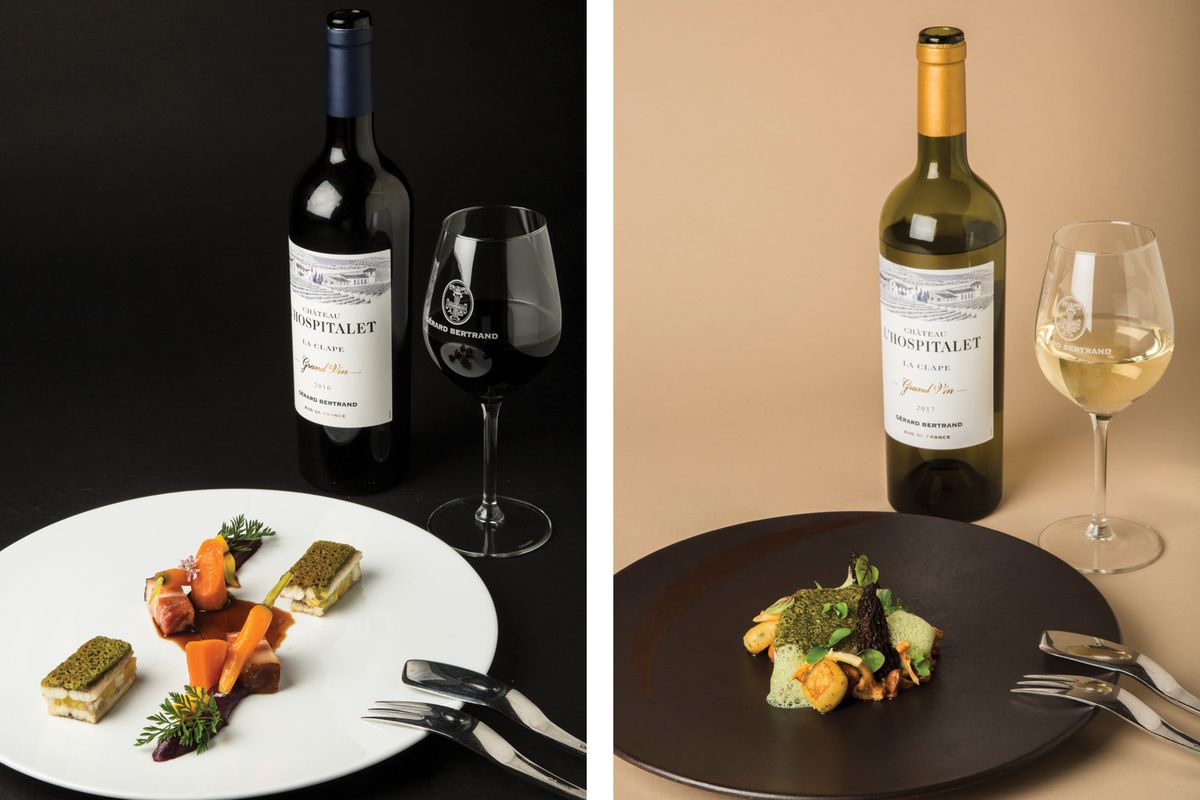Editor’s Note: Travel might be complicated right now, but use our inspirational trip ideas to plan ahead for your next bucket-list adventure. Those who choose to travel are strongly encouraged to check local government restrictions, rules, and safety measures related to COVID-19 and take personal comfort levels and health conditions into consideration before departure.
With ongoing border restrictions and new testing requirements, you might not be traveling internationally anytime soon. Even so, a little daydreaming might be just the thing to get you out of the doldrums. For instance, picture yourself in the south of France this summer, sitting poolside and sipping a glass of chilled wine. Feels good, doesn’t it?
To make this dream a future reality, we spoke with Gérard Bertrand, one of France’s best-known winemakers, about his home region of Languedoc-Roussillon. Bertrand gave us his personal list of what visitors should see, do, and perhaps most importantly, eat and drink to make the most of their time there.
First things first, if you’re not familiar with Languedoc-Roussillon, it’s a mountainous region in the south of France, bounded by the Mediterranean to the east and the Pyrenees to the south. Often overlooked in favor of the glitzy beach towns of Côte d’Azur and the prestigious vineyards of Bordeaux, it is nonetheless a land of breathtaking beauty. Sandy beaches line its coast, while the interior is dotted with Roman ruins and medieval fortresses. You can spend your days wandering the quays in seaside towns like Collioure, or strolling the cobblestone streets of postcard-perfect villages like Roquebrun.

CREDIT: DAVID FRITZ GOEPPINGER
Languedoc-Roussillon also happens to be France’s largest wine region, with half a million acres under vine, and producing about a third of French wines. It’s known for earthy red blends like grenache, carignan, syrah, and mourvèdre. You can also try tongue-tingling white sparklers like Blanquette de Limoux, which predates Champagne. There are even sweet fortified wines from Banyuls and the tiny hamlet of Maury, which is tucked away in the shadow of the Château de Quéribus.
No wonder Bertrand, one of France’s most prolific winemakers, calls Languedoc-Roussillon his home. A third-generation vigneron, Bertrand has deep roots there and now owns 16 wine estates spanning the entire region, all of which practice biodynamic agriculture. So, who better to ask about the area’s hidden gems? Rather than a blow-by-blow itinerary, he offered a snapshot of his personal picks where visitors can sit back, uncork, and enjoy.

Like any good French host, Bertrand recommends a sojourn at his own hotel, Château L’Hospitalet. The former 13th-century charitable hospice is set on a promontory with sweeping views of the sea near the ancient Roman city of Narbonne. You can even rent out the whole thing for $7,900 per night from September through June (there’s enough space for 34 guests). But if you don’t want to blow your entire wine budget, a single room will do, especially if it’s during the annual summer Jazz Festival in July. You don’t even have to go far for your first taste of wine. A red made from the grapes in the surrounding vineyards, Château L’Hospitalet Grand Vin Rouge AOP La Clape 2017 was awarded the best red wine in the world at the International Wine Competition in 2019.
If you had to try just one of his wines, though, Bertrand has a special place in his heart for the blend of carignan and syrah from his estate at La Forge. “That was my father’s favorite parcel,” he says. “Some of the carignan vines are over 100 years old, and the syrah is also from old vines.” It’s an excellent representation of wines from Languedoc-Roussillon region, he explains, adding that “the blend evokes powerful, elegant aromas, but delicately balances spice with all the nuances of cherries, including tartness, jam, and stone.”

CREDIT: COURTESY OF CHÂTEAU L’HOSPITALET
Of course, it would be best to try the region’s wines with some of its most famous dishes, including hearty cassoulet. For just the right nourishment after a perambulation of the city’s extensive fortifications, Bertrand recommends the homemade cassoulet at Restaurant Comte Roger in the in the walled medieval city of Carcassonne.
Languedoc’s long Mediterranean coast is also renowned for its fish and seafood. Stop for fresh, briny oysters at Le Domaine Tarbouriech in the sun-drenched town of Marseillan. While you’re there, spend some time bird-watching at L’Etang du Bagnas, keeping an eye out for pink flamingos and gray herons. Or, take a short cruise along the Canal du Midi, which terminates at the Pointe des Onglous, and schedule a tasting of vermouth at the historic Noilly Prat headquarters.
Spend a day windsurfing, sailing, or simply sunbathing at the beach near Gruissan, “where the gorgeous, sandy beaches rival the Riviera,” according to Bertrand. He recommends snagging a table at the open-air beach bar, Le Paparazzo, for drinks and casual fare. The fishing village itself is a warren of beautiful, narrow alleys on a hill between two lagoons and crowned by a 12th-century tower. “Gruissan is also known for oyster farming, and a great place to sample them is along the marshes at the outdoor La Cambuse du Saunier,” says Bertrand. The restaurant is right beside the city’s famous salt pans, where you can pick up some savory souvenirs.

According to Bertrand, another can’t-miss local dish is aged Aubrac beef at Château L’Hospitalet’s L’Art de Vivre restaurant. A breed from France’s Massif Central region, the cattle are fed a diet of grass, hay, and herbs, giving the meat a distinctive marbling and luscious flavor. For your splurge, though, book a table at Auberge du Vieux Puits. “This three-Michelin-star restaurant near Narbonne incorporates some of the best local ingredients from markets around the region into the most beautiful dishes,” says Bertrand. Among the specialties are sautéed Mediterranean grouper in a ragout of its own juices with tarragon and pressed local vegetables, as well as roasted black pig with puffed rind, black pudding mousseline gratin, andouille meatballs, two kinds of potatoes, and local olive jus.
Fun fact: Six-foot, five-inch Bertrand was also a famous rugby player for RC Narbonne, so naturally he has some physical activities to suggest, too. “The Cathar castles are one of the historical highlights of the region, and there’s a great trail that connects some of these perched, medieval strongholds that sit in the foothills of the Pyrenees mountains,” he says. In fact, you can spend days — or weeks — hiking the Cathar Trail, visiting these impressive mountaintop aeries one after another.
Among the most significant are Montségur, where the splinter Cathar sect of Christians succumbed to a siege by the forces of the French king from 1243 to 1244, and the sprawling, dual-level ruins of Peyrepertuse. Hike up to Quéribus to see its breathtaking salle du pilier (pillar room), whose graceful pillars resemble palm trees. On your way down the mountain, stop in the village of Cucugnan, recommends Bertrand. “A famous baker named Roland Feuillas mills wheat and other grains at a 17th-century windmill that he uses to bake goods for his in-town boulangerie, Les Maîtres de Mon Moulin,” he says.
Finally, if you happen to be traveling between Narbonne and Carcassonne, stray north to the village of La Livinière in the Minervois appellation, insists Bertrand. “Not only is it picturesque, but it’s also where some of the best red wines in the region come from,” he says. Drawn to the arid area, complete with limestone soils and impossibly pink sunsets, Bertrand purchased the estate that would become Clos d’Ora in 1997. With a dream “to link mineral, plant, animal, and human,” as he puts it, “the land and vines are cultivated biodynamically, by mule, so there is a strong connection with nature.”
Bertrand himself has a strong bond with this particular plot of land. He calls it his sanctuary, “dedicated to peace and love…where I come to escape and be in harmony with my surroundings.” Now, doesn’t that sound like a place we could all enjoy after this past year?
Source: travelandleisure.com





























